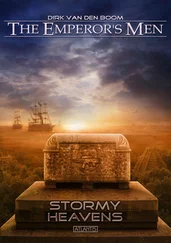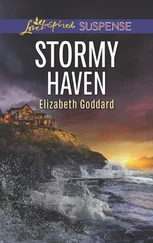In times past, before the Tollivers had built the house, before Europeans had come, before there were horses, the spring air was choked with smoke as the Lipan Apache set fire to the grass in the valleys. After the fire, small sprouts grew up for the buffalo who every year came out of caves in the far south. The ridges were left wooded where men could sit in the shade and become invisible to the buffalo down below. Where they could watch them with the intense pleasure the predator has in watching its prey. The creatures they hunted were not only animals but also the representatives of animals to come, they were the protagonists of stories.
Then the Nermernah came down from the Rocky Mountains, from the remote north. They came on horses of all colors, out of the plains of alkali water. The Nermernah scattered before them the Apaches, the Mexicans, the Texans, the Tonkawas, and the Caddos, and took what they wanted: captives and guns and horses and women’s petticoats and mattress ticking and watches and chamber pots and kegs of tobacco. The few Lipan Apache who were left alive went away to the east, and were not heard from anymore. Their name among the Mescalero Apache and the Jicarilla Apache was a variation of the word for lost , for disappeared, for remnant.
By their enemies, the Nermernah were called Komantcia, Comanche. It meant someone who wants to fight all the time. Long ago they lived in the far north. They were a tribe on foot who were driven into the mountains by stronger people. They lived hungry lives and were always in fear of other tribes. They hid in the Wind River Mountains that stand like a wall of snow in northern Wyoming. They seemed to be inept, they were good at nothing. Their own cousins, the Utes, called them snakes and dirt eaters. They had messy hair and wore unclean skins. Their language had only vague names for colors. They had no ceremonies and they were too proud to eat dog. Other tribes ate dog but the Comanche would not, even if they were starving. And so the dogs that nodded and wagged at the edges of their campfires were grateful, and after many centuries of arrogant starvation and suffering on the part of the Comanche, the dogs brought to them a gift: horses.
The horse spread across the plains sometime after the Pueblo Rebellion of 1680. The dogs came harrying them through the deep snows, up a ravine. They waited and turned in the snow and stared expectantly at the people around the campfires. And when the Comanche were mounted, they found that they were more than themselves. They discovered something in themselves that had been there all along. They possessed a genius for war and horsemanship beyond all other people. They sank onto the horses’ backs in the knowledge that they had acquired the other half of their bodies, that they were now complete. They turned on those who had disdained them. They were a moving wall of fatality. Their cavalry charges swept the plains clean. They could not be unhorsed nor outrun. Nothing could equal their joy in riding at suicidal speeds toward the terrified enemy.
They raided and set fire to Mexican settlements in South Texas and New Mexico, and if the women and children survived they were ransomed back or sold as slaves. They ranged up to the Black Hills to batter the Sioux and the Cheyenne. Their war cry was Rah! Rah! Rah! They grew rich in horses. They loved their horses beyond anything and they bred them carefully for splashy three-colored paints. They rode these unflinching horses into war and then came home in triumph wearing corsets and top hats and other people’s hair.
For two hundred years they were the lords of the southern plains. Nothing could stand before them except the slow tidal wave of people who came from the East. This was because the Europeans divided the land into pieces, and recorded everything they did in writing, which was a form of distilled speech. And that was the end of the story of the wars of the Comanche. The grinning, treacherous dogs trotted up in the night, gray as bullets, and took back their gift of horses.
The house was built in 1873, the year the last person in Palo Pinto County was killed by the Comanche. Jesse Veale’s horse threw him as he tried to escape, near Ioni Creek. They found him dead and pale, leaning back against a tree, shot through many times. His hat and his gun were gone, but he still had his hair. By that time Samuel Tolliver had bought land including the ridge overlooking the Brazos, and with his two brothers he laid the sandstone foundations of the house, and lifted the balloon frame over it and dug the well. They nailed on cedar shingles and placed glass in each window.
In 1883 Nannie and Samuel Tolliver lost their two children in a diphtheria epidemic. That year Mussolini was born in the village of Predappio in Emilia-Romagna, and in 1884 Isoroku Yamamoto was born in Niigata on Honshu Island in Japan. In early January of 1887 a norther struck the Brazos River valley, dropping the temperatures to eight degrees Fahrenheit. By the fifteenth of January the temperature had climbed to eighty-six degrees. Then on the sixteenth of January a second norther blew in at four-thirty in the afternoon, driving the temperature down to forty-two. By the thirty-first of that same January the temperature was ninety degrees in the shade.
In 1889 Adolph Schickelgruber was born in Braunau-am-Inn, Austria, and the great Union Stockyards were open for business in Fort Worth, with a capacity for 5,000 head of cattle per day. In the spring of 1892 Israel C. Everett, a cattleman of Comanche County, drove into the nearby town of DeLeon with his wife and two sons. They were on their way to attend the funeral of Reverend Cyrus Campbell, one of the oldest settlers of the area. The two boys were told to look carefully at the face of the dead man, because in his youth he had been paid five dollars by the Republic of Texas to forge the leg irons for Santa Ana after the battle of San Jacinto. In 1897 John Cardwell Stoddard was born at the remains of the Stoddard ranch west of Mineral Wells while his father and grandfather drank themselves blind in the corn crib. In 1900, Samuel and Nannie’s last and only surviving child was born, a late baby that they named Elizabeth.
The Tolliver house was built in the southern style, with a fireplace and chimney at each end and a long cool hall in the middle. The house was alive in a stubborn and silent way and within its walls people were born and died and bread rose in its wooden tray. The wearings of use patterned the house; the beaten path to the well, the grapevines that grew in profusion near the washhouse where soapy water was thrown out, a trench dug by the front hooves of horses at the hitch rack. Men left their spurs at the back porch rail. Visiting cousins hid in the sugar barn to attempt smoking cigarette butts and watched in nauseated fascination as the world revolved slowly around them. Men left for the oil fields and broke their marriage vows and marriages were contracted again and broke apart and re-formed and somewhere a woman wept with her face to the window glass.
Two hundred miles to the north, where the rolling hills of Central Texas flattened out to the plains, the XIT ranch was broken up because of the drought and financial depression of the late 1880s. The owners began to sell most of its million acres in farm-size lots. The Slaughter ranch did the same. Families came for cheap land, thirteen dollars an acre, and gang plows tore up the grama buffalo grass and the wire grass. They planted wheat and dismembered the root matts of the short-grass plains and for a while the dry-land farmers made money with wheat, but it didn’t last long. The Great Depression and the great drought began in 1930. On April 14, 1935, the largest dust storm ever recorded foamed across the skinned land and in three states buried whole towns, railroads, cars, trucks, people, cattle, and houses. Miriam Everett died of dust pneumonia.
Читать дальше












